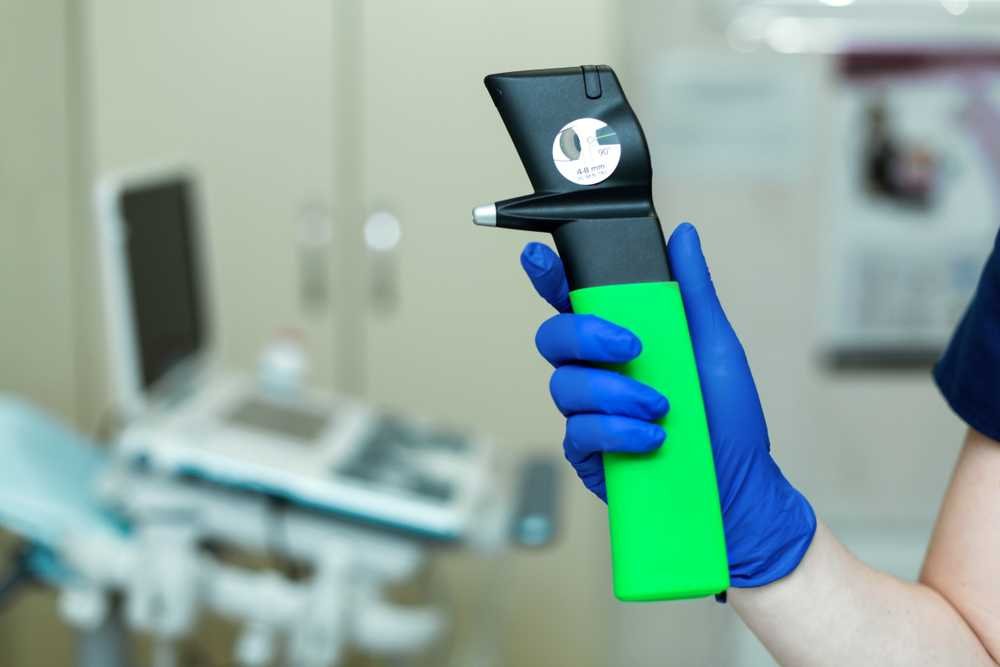Table of Contents
Humans make sense of what is around them by sight.
For example, patients must see an optometrist regularly when visiting the dentist to check for cavities. This helps people spot problems they might not notice daily.
As an optometrist, you need to have everything ready. This helps you provide your patients with a thorough and accurate eye health appointment. Having the right equipment is crucial for this.
This means your surgery will need a vision screener machine, which our team at Nava Ophthalmic can provide. We have the most extensive range of ophthalmic tools and products to help optometrists offer top-notch care for their patients.
Understanding Vision Screener Machines: Technology & Benefits
The World Health Organisation states that globally, 2.2 billion people have a vision-related disease. Many people could have prevented these occurrences. We aim to do this with the help of our vision scanner machines.
How Vision Screeners Work
Vision screener machines scan patients’ eyes using infrared light reflecting off the retina. This gives the optometrist important information about eye alignment and helps detect size and refractive errors.
It measures all this automatically, reducing human error and providing more accurate and instant results. The device checks different parts of the vision. It is an excellent tool for quick screenings in schools, clinics, and hospitals.
Key Benefits
The core benefits of investing in vision screener tests for your optician practice include the following:
Suitable For Children
The tests can be used on children of all ages, as they are noninvasive and don’t require patient cooperation. They can lead to diagnoses of eye issues at an earlier age, which can then prompt more effective treatment options. They can also offer a faster alternative to pediatric vision screening.
Suitable For Non-Verbal Adults
Our screening tool helps nonverbal adults and those with extra needs. Because of communication issues, these individuals often have complex medical needs.
Precision
These devices are exceptionally good at finding even small problems in the retina and cornea. This helps doctors diagnose more vision issues accurately.
Faster Diagnosis
Removing human error in interpretation means patients will get a faster diagnosis. This improves the outlook for serious vision problems.
Common Conditions Detected by Vision Screeners
Myopia (near-sightedness)
This disorder causes nearby images to appear blurred. Its cause is usually an unusual growth pattern of the eyeball. This pattern often starts in childhood.
The most common issue found during school vision screenings is present. Researchers have linked it to environmental and genetic factors. Early vision checks can find signs of this problem. You can often help it with contact lenses or prescription glasses.
 Hyperopia (far-sightedness)
Hyperopia (far-sightedness)
Hyperopia, also called farsightedness, is a common vision problem that can be easily diagnosed with eye tests or basic eye checks.
This condition means the eye is not bending light correctly to focus on one point, making images appear unclear. People with hyperopia often see distant objects clearly but find close objects blurred.
Astigmatism
Astigmatism is a condition in which the eyeball is shaped more like a rugby ball than a golf ball. There are cases of hyperopia astigmatism and myopia astigmatism. The most common types found in eye exams are corneal and lenticular astigmatism.
With corneal astigmatism, the front of the eye (the cornea) is more pointed, causing things to look blurred. Lenticular astigmatism happens when the lens in the eye has an unusual shape. This can occur even if the cornea is normal.
At Nava Ophthalmic, we offer noninvasive eye screenings. Our portable vision screen readers can find small differences in a patient’s eyes. This helps make the diagnosis of astigmatism more accurate.
 Amblyopia (lazy eye)
Amblyopia (lazy eye)
Amblyopia, or lazy eye, is a type of poor vision that happens in just one eye but can sometimes occur in both eyes. It happens when the brain and eye do not work well together. The brain cannot recognize the information from one eye. To compensate, the brain relies more on the other eye, which causes the vision in the weaker eye to worsen.
Amblyopia starts in childhood, and it is the most common cause of vision loss in children. The CDC estimates that as many as three in one hundred children have it. With early diagnosis from digital eye exams and better vision screening technology, treatment is often successful. This helps prevent long-term vision problems.
Types of Vision Screen Readers
Diagnosing vision issues takes skill and relies heavily on an optician’s machinery. An automated eye test and portable vision screeners can give more accurate results for patients, leading to better outcomes.
Tonometer
Every optician needs a tonometer. It is a handheld diagnostic tool that accurately measures intraocular pressure. It can lead to accurate diagnoses of glaucoma, which occurs when high pressure damages nerve fibres. Glaucoma contributes to a gradual worsening of eyesight and even blindness.
This tool can also diagnose potential undiagnosed blood pressure issues and effectively track the effectiveness of glaucoma treatments.
Phoropter
The most common tool in an optician’s office is a phoropter. It measures refractive errors and enables your team to determine the correct prescription for corrective lenses for your patients.
After measuring visual acuity, you can test binocular vision. A good phoropter can help you quickly find the right glasses strength. It can also determine whether you need bifocal or varifocal lenses, which make the lenses fit better for each person.
Retinoscope
A retinoscopy, also known as a sciascopy, helps opticians find eye refractive errors without asking patients what they see.
It is faster and more accurate. It requires little patient cooperation, making it good for children, babies, and nonverbal adults.
Autorefractor
An autorefractor measures how light bends when it enters a person’s eye. It provides an objective measurement of refractive error. A computer controls this machine. This helps opticians make better choices for glasses or contact lenses.
Vision Screener
A vision scanner checks both eyes and gives opticians a clear view of how each eye sees shapes, colors, and details.
Portable vs. Traditional Vision Screeners: Which Is Better?
When picking a vision scanner for your surgery, you might wonder which type is best for diagnostics. Both portable and traditional offer a similar level of efficacy, but there are some other aspects to consider.
Space
A large ophthalmoscope can occupy an entire room in your clinic, which is not ideal if you are short on space. Thanks to digital scanning and handheld options, many opticians choose portable screeners. They can be safely stored in a drawer.
Cost
Speaking of ophthalmoscopes, they can be expensive to install, buy, and operate. With handheld screening options, you can get a similar reading of a patient’s retina. This is at a lower cost and with less operational expense.
Speed
Another advantage for today’s opticians is a portable tool. This tool allows them to scan the retina or cornea anywhere in their clinic. If you and your team have several devices, you and your team can finish assessments faster. There won’t be a wait to use the room with the ophthalmoscope or other equipment.
New Technologies and Innovation
Artificial intelligence is now used in many eye exams. It helps make diagnoses more accurate. It is also faster and easier for more people to access.
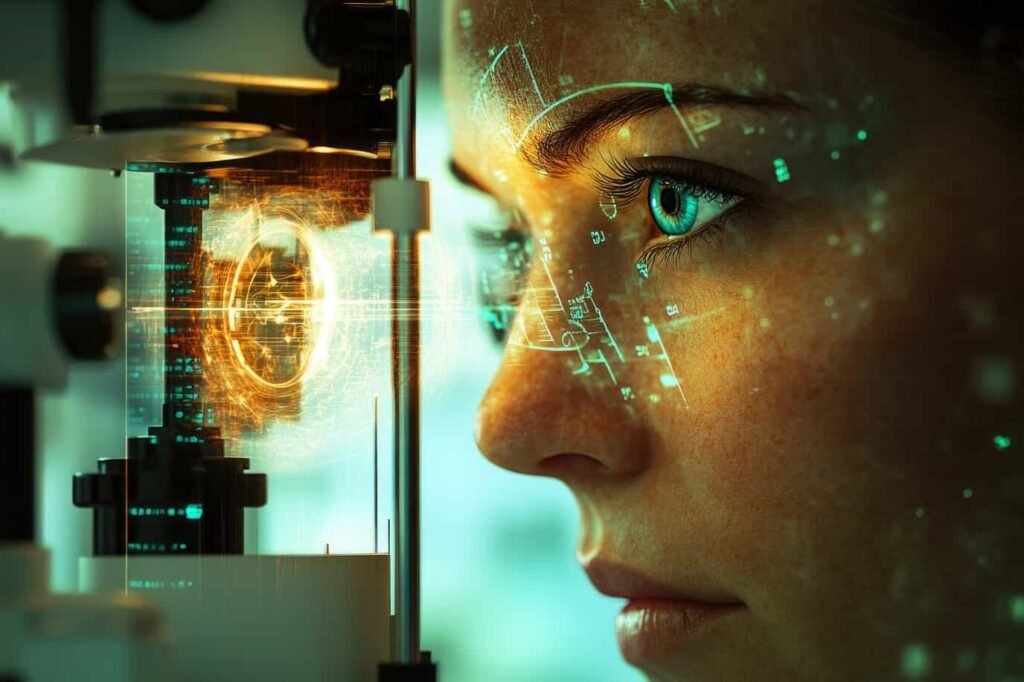
Research has found that AI-powered eye screening can help opticians with the following:
Early Detection of Optical Issues
AI-powered screening devices are better at finding early signs of eye problems. They can catch issues before they get worse. These systems can more precisely analyze retinal image scans and other eye images, leading to more accurate diagnostics.
Personalized Corrections
AI algorithms can help make accurate prescriptions for glasses and contact lenses. They do this by analyzing data from an eye exam, which includes eye shape, structure, visual habits, and lifestyle factors.
For example, an AI optometry tool can help your team find the right lens strength if a patient uses digital devices often. This can help address the issue with any prescription.
Treatment Monitoring and Adjustment
A core part of treatment for any vision-related issue is tracking if it is progressing and how any treatments impact it. With AI systems, you and your team can better monitor the treatments you have used.
You can track vision changes more accurately. This important step can help you see if conditions are worsening and make informed choices about any changes needed in current treatments.
AI software can help find unusual shapes or positions in the cornea and retina. These could be signs of an undiagnosed disorder.
Compare and Contrast: Choosing the Right Vision Screener Machine
When you seek to upgrade your vision scanner machine, what are some of the core things to look for?
Adaptability
In the past, optical teams needed a lot of time to prepare the devices for a standard eye test. If any adjustments were needed, this would make the appointment longer.
You and your team want to ensure that all your patients receive the right care and assessments while with you.
Considering a vision screener or another tool is helpful. Based on your initial findings, you can quickly adjust this tool for the tests you want to perform. Every patient is different; you need a device to adapt to their needs and requirements.
Portability
Many traditional devices that optometrists use are bolted to the floor or wall. This makes it harder to get accurate readings. This is especially true for younger patients, those with extra needs, or those with mobility issues.
Portable vision screeners can help these groups. They also provide the same accuracy and precision.
Accuracy
As an optical team, you want to ensure your patients get the right diagnosis. When picking the right vision screener machine, check its effectiveness compared to other models you use. Also, see how it can improve your diagnostic assessments. Many ophthalmic tools work best in conjunction with others and can boost the accuracy of diagnostics in your clinic.
Why Choose Nava Ophthalmic For Your Optical Devices?
At Nava Ophthalmic, our team dedicates itself to helping patients achieve optimum eye health. We offer a wide range of eye care products. These help opticians give thorough eye exams to their patients. Our brands are socially responsible and affordable.
We can help update the devices in your eye care practice and inform you about new advancements. Contact our team to learn more.

John Berdahl, MD
Meet Dr. Berdahl
Dr. Berdahl is most motivated by the trust his patients place in him during their moments of vulnerability.
That patient trust has, first and foremost, driven him to become an accomplished surgeon. However, as he meets patient needs and learns more about the problems they face, he’s had several opportunities to stretch his skills as an inventor and problem-solver. He co-invented the MKO melt, an innovation used in our Sioux Falls clinic that provides sedation during cataract surgery without the use of an IV or opioids, and developed Interfeen, a rare disease drug that helps with ocular conditions. He created astigmatismfix.com, a resource that has helped tens of thousands of surgeons eliminate residual astigmatism after cataract surgery, and he co-founded ExpertOpinion.MD, a site where patients can request medical opinions from authentic world experts. He also is the founder of Balance Ophthalmics, the first non-surgical, non-pharmacologic way to lower eye pressure for glaucoma treatment, which was FDA approved in 2024.
Interests & Added Expertise
Dr. Berdahl is equipped to employ the most innovative and tested techniques available to effectively treat most diseases of the anterior segment (front part of the eye). He is exceptionally skilled at diagnosing the best treatment for varying stages of glaucoma, corneal diseases, and cataracts. He is also a meticulous refractive surgeon.
To advance the technologies available to our patients, Dr. Berdahl collaborates with numerous ophthalmology companies as a consultant. However, to minimize potential bias, all consulting fees are donated to charity.
Education
- Hills-Beaver Creek High School, Hills, MN
- Augustana College, Sioux Falls, SD
- Mayo Medical School, Rochester, MN
- Mayo Clinic Internship, Scottsdale, AZ
- Duke University, Durham, NC
- Minnesota Eye Consultants Fellowship (Minneapolis, MN)
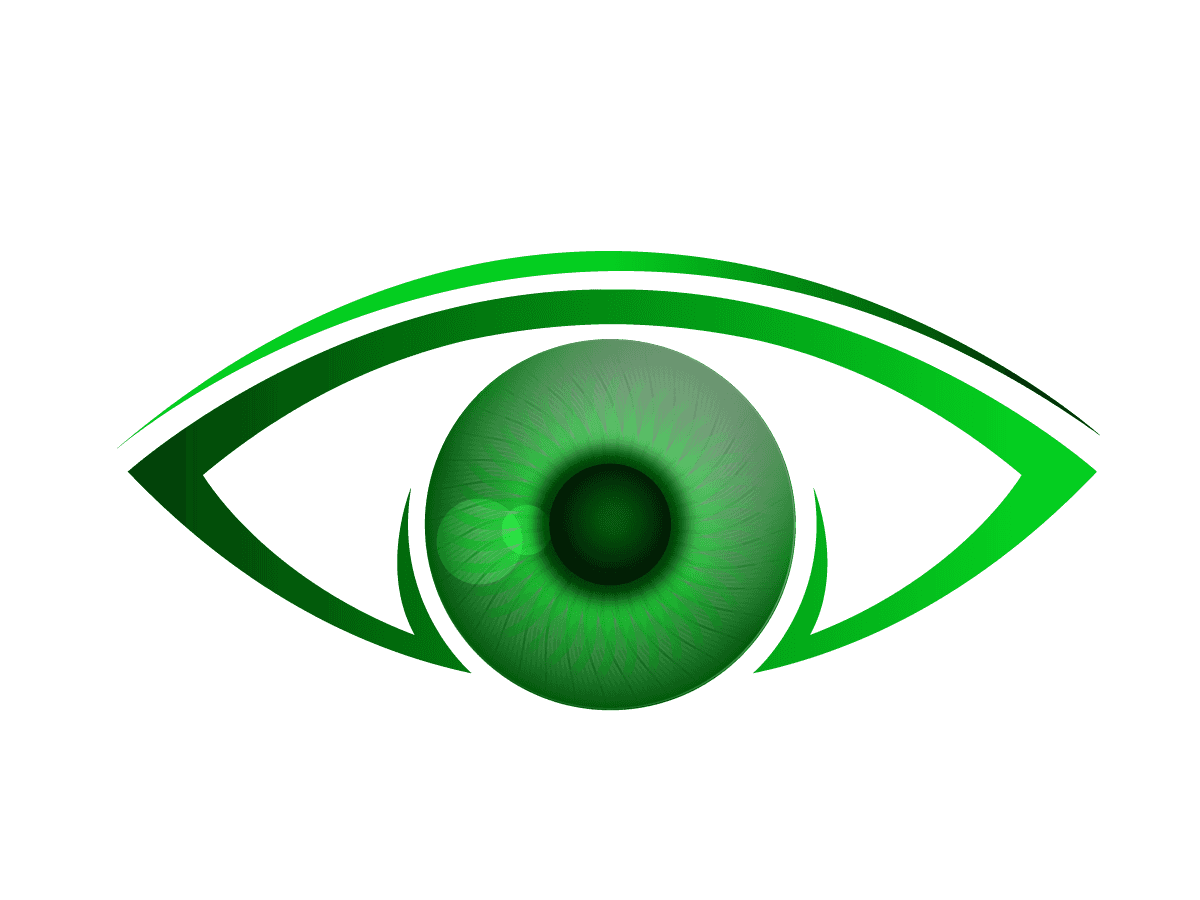

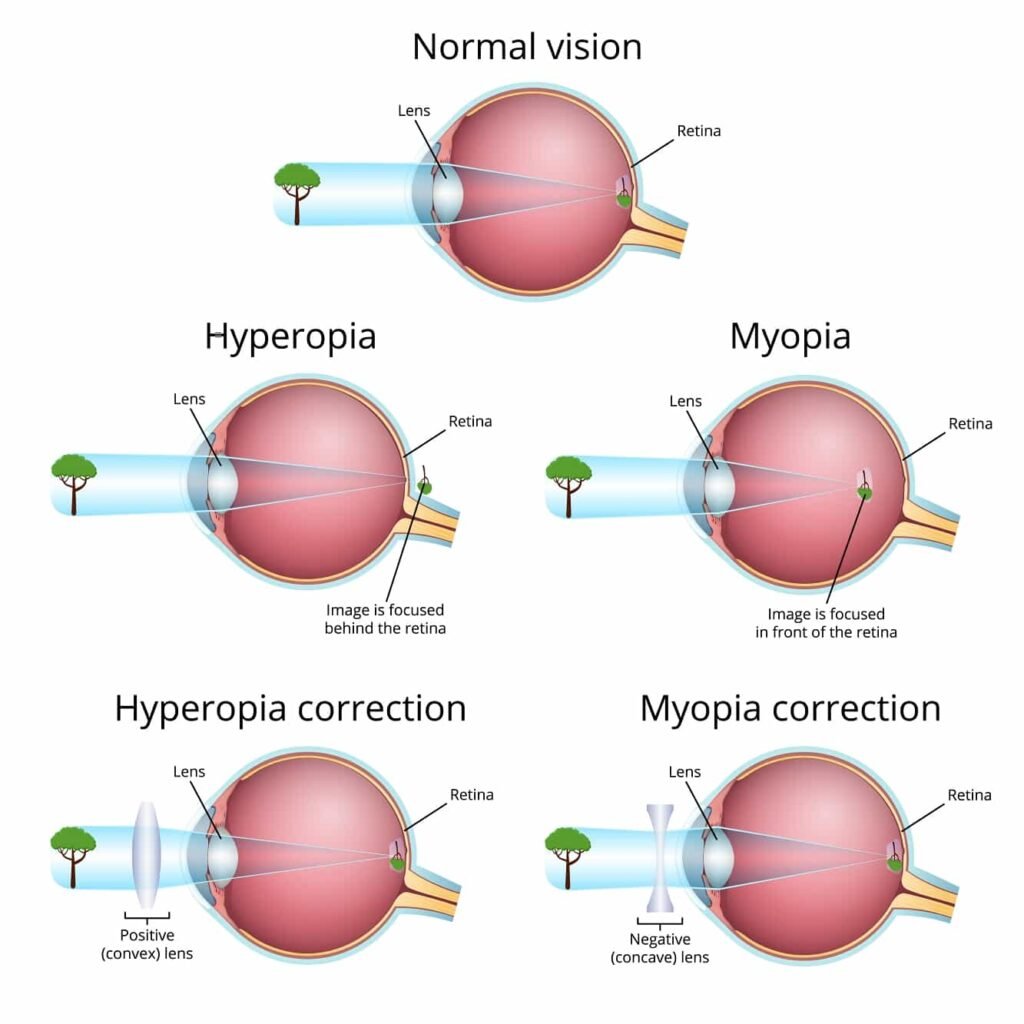 Hyperopia (far-sightedness)
Hyperopia (far-sightedness)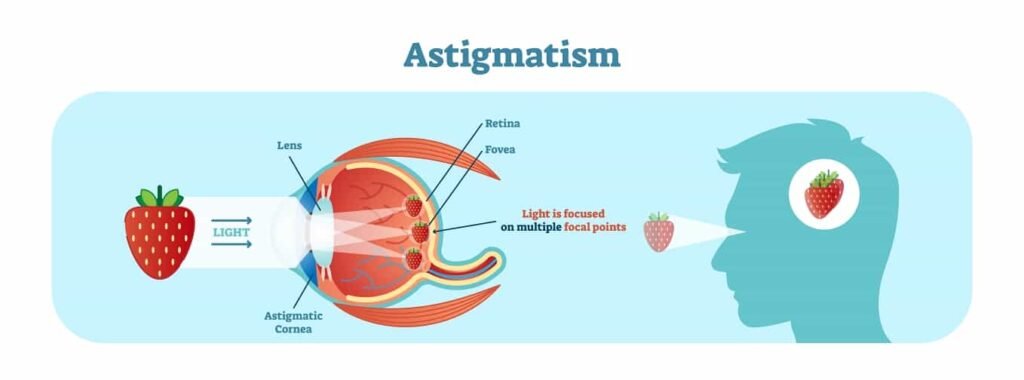 Amblyopia (lazy eye)
Amblyopia (lazy eye)